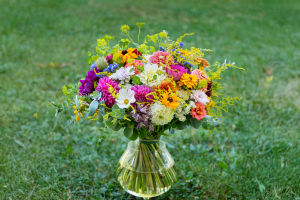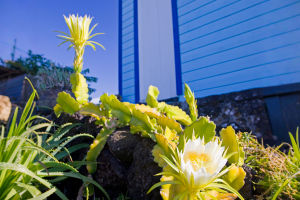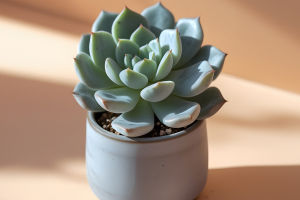Creating a sustainable garden isn't just about planting beautiful flowers or lush greenery—it's about fostering a space that works in harmony with nature. As we become more aware of environmental issues, many of us are looking for ways to make our gardens more eco-friendly.
A sustainable garden can help reduce water usage, minimize chemical inputs, and support biodiversity. The key to achieving this is by choosing the right plants—ones that are not only beautiful but also resilient, low-maintenance, and beneficial for the environment.
In this article, we'll explore the best plants for creating a sustainable garden that's both eco-friendly and easy to care for. Whether you have a large backyard or a small balcony, these plants will thrive with minimal effort and help you build a greener, more sustainable space.
1. Native Plants: The Ultimate Eco-Friendly Choice
One of the best ways to create a sustainable garden is by choosing native plants. These plants are naturally adapted to your local climate, soil, and water conditions, making them ideal for low-maintenance gardens.
Native plants require less water, fertilizer, and pesticides because they've evolved to thrive in the specific conditions of your region. Additionally, they provide essential habitat and food for local wildlife, such as birds, bees, and butterflies.
Some excellent native plants include:
• Black-eyed Susan: A hardy perennial that attracts pollinators and thrives in a variety of soil types.
• Purple Coneflower: Known for its beautiful blooms and ability to withstand drought conditions.
• Wild Bergamot: A fragrant herb that draws bees and butterflies while being drought-tolerant.
By incorporating native plants, we help preserve local ecosystems and reduce the need for excessive watering and chemical treatments.
2. Drought-Tolerant Plants: Saving Water
With water conservation becoming increasingly important, drought-tolerant plants are a must-have for any sustainable garden. These plants are specially adapted to withstand dry conditions, which means they require less frequent watering and are more resilient during hot, dry months.
Some of the best drought-tolerant plants include:
• Lavender: A fragrant and hardy herb that thrives in well-drained soil and full sunlight.
• Succulents (such as Aloe Vera): These plants store water in their leaves, making them ideal for dry environments.
• Sedum (Stonecrop): Known for its ability to survive with minimal water, sedum is a great choice for creating a low-maintenance garden.
By choosing drought-tolerant plants, we can reduce our water usage while still enjoying a beautiful garden.
3. Edible Plants: Grow Your Own Food
Another way to make your garden more sustainable is by growing edible plants. Not only will these plants provide you with fresh produce, but they also help reduce your carbon footprint by cutting down on the need to buy packaged food that's been transported long distances. Plus, growing your own herbs, fruits, and vegetables can be incredibly rewarding!
Some excellent edible plants for a sustainable garden include:
• Tomatoes: A classic garden plant that's easy to grow and can be used in countless dishes.
• Herbs (such as Basil, Mint, and Thyme): These fragrant plants are perfect for small gardens or containers and can be used to enhance your cooking.
• Fruit Trees (such as Apples or Citrus): If you have the space, fruit trees provide delicious produce year-round.
Edible plants not only benefit the environment but also allow you to enjoy homegrown, chemical-free food.
4. Pollinator-Friendly Plants: Supporting Biodiversity
Pollinators, such as bees and butterflies, are essential for the health of our ecosystems. However, many of these creatures are facing threats due to habitat loss, pesticide use, and climate change. By planting pollinator-friendly plants, we can help support their populations and ensure the continuation of vital pollination services.
Some pollinator-friendly plants include:
• Milkweed: A favorite of monarch butterflies, this plant is essential for their lifecycle.
• Bee Balm: A fragrant perennial that attracts bees and other pollinators.
• Zinnias: Bright and colorful flowers that are loved by bees, butterflies, and hummingbirds.
By planting these species, we contribute to the health of local ecosystems and help preserve pollinator populations.
5. Groundcovers: Low-Maintenance Solutions
Groundcovers are an excellent choice for sustainable gardens because they help reduce soil erosion, suppress weeds, and retain moisture in the soil. These plants spread out quickly and require little maintenance, making them ideal for areas where you want low-maintenance greenery.
Some great groundcover options include:
• Creeping Thyme: A fragrant, drought-tolerant herb that forms a beautiful carpet of green.
• Creeping Jenny: A low-growing plant with bright green leaves that thrive in sunny to partially shaded areas.
• Sweet Woodruff: An easy-to-grow perennial that's perfect for shady spots.
Groundcovers not only enhance your garden's aesthetics but also contribute to water conservation and soil health.
Conclusion: Build Your Sustainable Garden Today
Creating a sustainable garden is all about choosing plants that are low-maintenance, eco-friendly, and beneficial to the environment. By opting for native plants, drought-tolerant species, edible plants, pollinator-friendly options, and groundcovers, we can make a significant positive impact on our surroundings while also enjoying a beautiful, functional garden.
So, whether you're an experienced gardener or a beginner, the key to a sustainable garden is to make thoughtful choices. As we continue to look for ways to reduce our environmental footprint, our gardens can play a crucial role in supporting the planet.
Ready to start your sustainable garden? Let us know what plants you're considering, and feel free to share your own tips for creating a greener, more eco-friendly garden! Happy planting! 🌱


